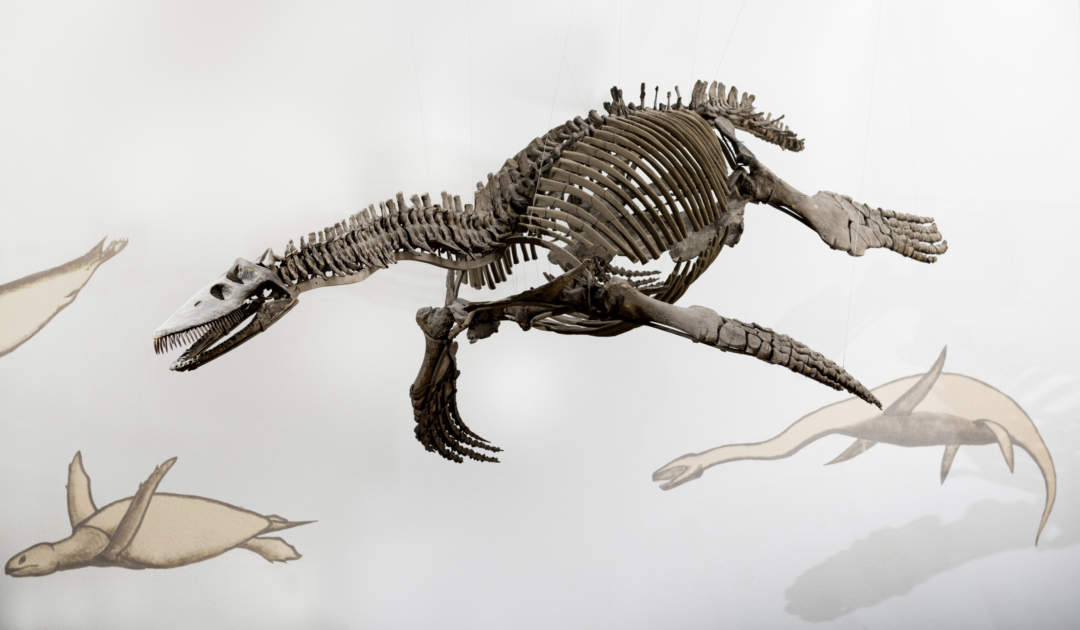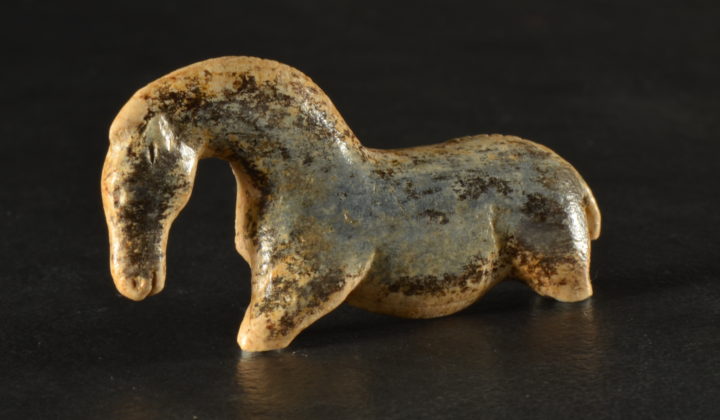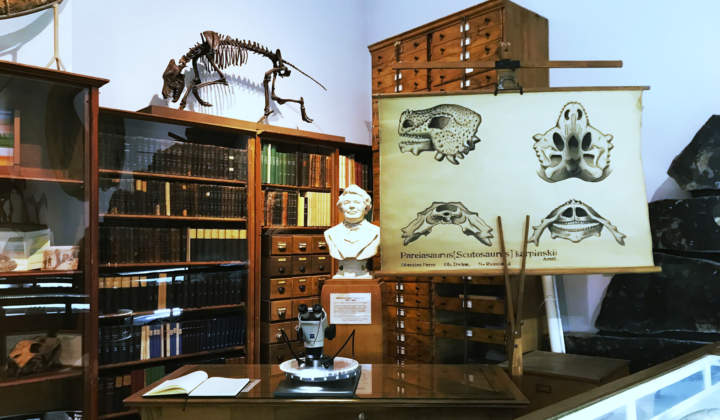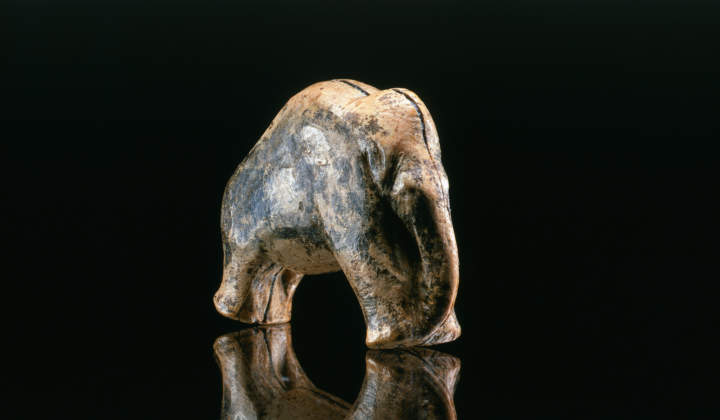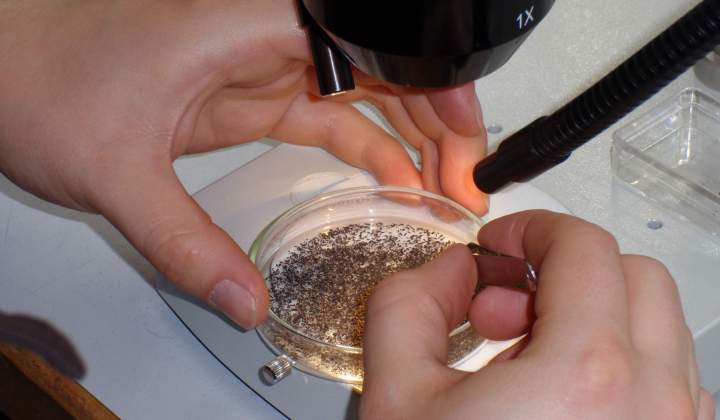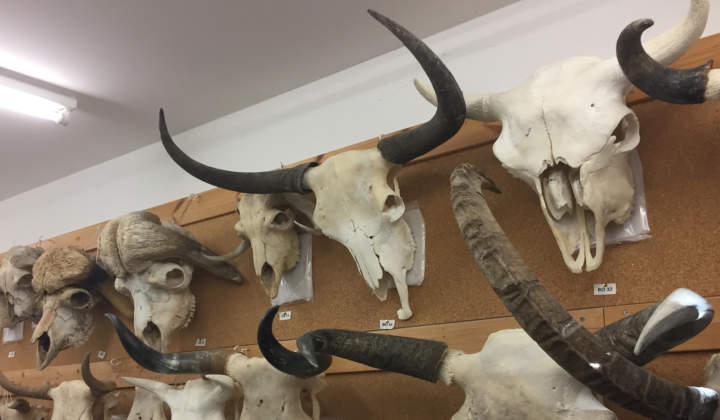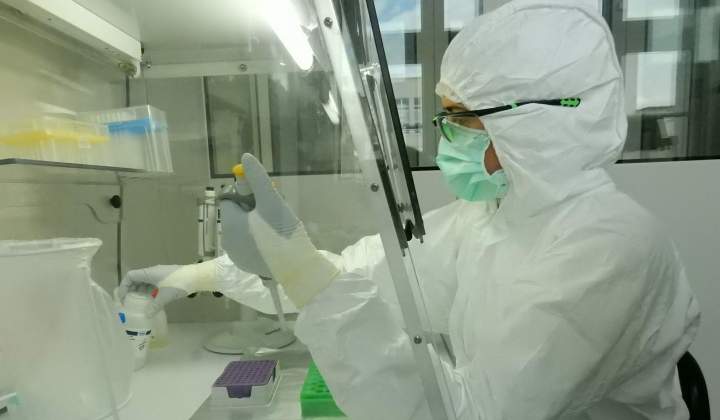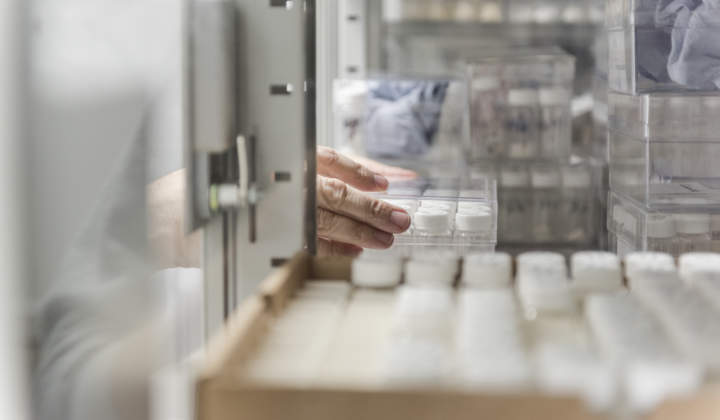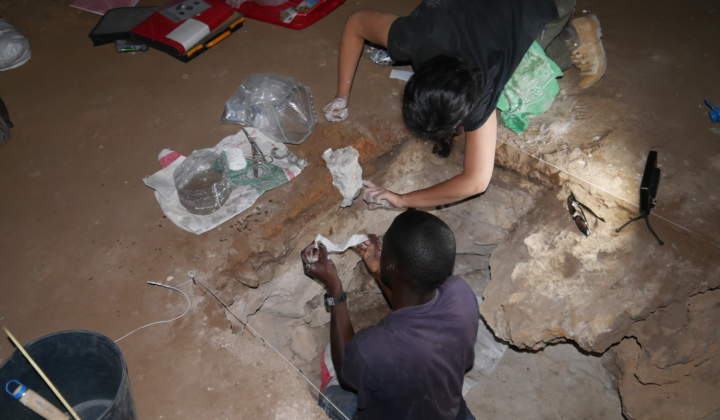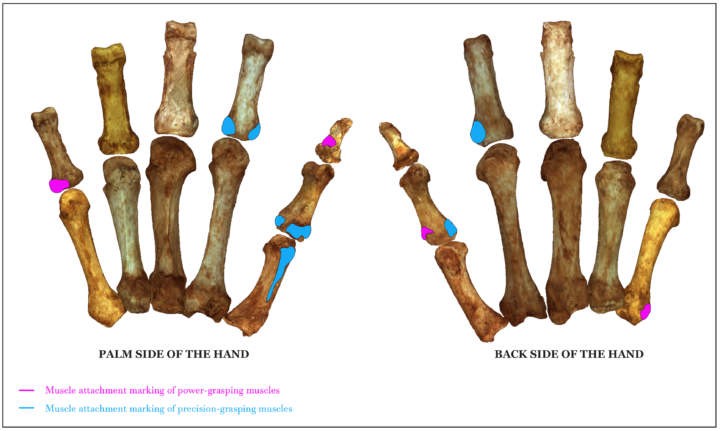2. Exhibtion
a.) Corridors and staircase
In the stairway, numerous skeletons of ichthyosaurs and marine crocodiles from the Posidonia Shale formation (approximately 184 million years old) of Holzmaden welcome the visitor of the paleontology collections.
Particularly favorable conditions on the sea-bottom have permitted the fossils to remain nearly intact, even soft parts or embryos have been conserved in some cases.
In the entryway of the museum, some exciting trace fossils of Paleozoic and Mesozoic age from Spain, Italy and Germany can be seen.
b.) Plateosaur Hall
The “Schwäbische Lindwurm”, as the Plateosaurus is also called, is an early dinosaur of the Triassic, and can be admired in two fossil skeletons. They have been already constructed in 1928 and presented according to instructions of their excavator, Friedrich von Huene. A strongly armored Kentrosaurus from Tanzania, as well as a fossilized pathway of Chirotherium or “hand -beast”, frame the impressive skeletons.
c.) Marine Reptiles Hall
The world of the Jurassic sea is the topic of this hall. Numerous skeletons of ichthyosaurs from the Posidonia Shale formation are presented here, in addition to a row of marine crocodiles, plesiosaurs, fishes, and sharks, which lived between 200-145 million years ago in Germany and England.
Among them are large opportunistic feeders like Temnodontosaurus, which reached up to 15 m, and fossil coelacanths, living fossils. In one side room is a skeleton of the placondont Henodus, a reptile, which has only been found locally so far, in the region at Tübingen-Lustnau.
Several skeletons of flying reptiles complete the display of findings from the Jurassic sea. Beyond that in the side room, two six-meter-long mosasaurs, large predators of the Cretaceous, are displayed as well.
d.) Württemberg Hall
Skeletons of two cave bears (Ursus spelaeus) and of a wolf (Canis lupus) from Pleistocene sediments of the Erpfingen Bear Cave on the Swabian Alb are shown.
Baden-Württemberg ranks among the most classical find areas for geology and paleontology.
An abundance of unique fossils offers views of the different ecosystems from Württemberg’s geological history.
The oldest deposits formed about 300 million years ago, the most recent before some ten thousand years ago in the Erpfinger bear cave, whose cave bear skeletons are original fossils.
e.) Stratigraphic Hall
Under the Swabian Medusenhaupt, an enormous sea-lily colony from the Posidonia Shale formation of Ohmenhausen near Reutlingen (approximately 183 million years old), a large collection of fossils of all earth ages is displayed in stratigraphic succession.
The presentation shows the most important steps of evolution over the last 500 million years.
The special character of this room is due to natural cabinetry from the 19th century, which highlights the historical showcase in collection cabinets made of oak.
3. Curation
PD Dr. Ingmar Werneburg
Senckenberg Centre for Human Evolution and Palaeoenvironment an der Universität Tübingen
Sigwartstraße 10
72076 Tübingen
For scientific requests: ingmar.werneburg@senckenberg.de
For guided tours: +49 7071 29-72998
